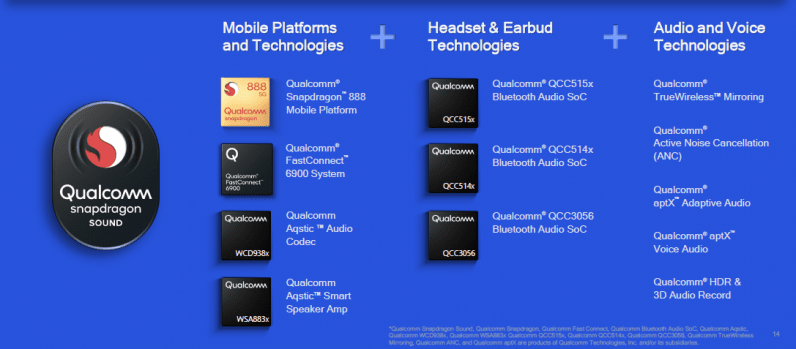Smartphone audio is not always at its best when you’re listening to music or playing games through wireless earbuds. You might experience quality drops, glitches, or latency issues. Snapdragon Sound aims to solve all these problems with series of existing and new hardware and software solutions, including processors, DACs (Digital to Analog Convertors), and codecs. Now, we can’t really know what “better” audio means till we talk some numbers. Snapdragon Sound claims to achieve three things: 24-bit 96kHz signal support for music, 32kHz sampling frequency support for calls, and 89ms latency for videos and gaming. For consumers, this mainly means that you can listen to high-fidelity music on your smartphone, take calls without any audio drops, and play games or watch movies without sound lags. If you’re confused by what that kHz means, I beg you to read this explainer of audio sampling rate by my colleague Callum. DO IT. The road to getting these numbers or performance is not straightforward. Your smartphone needs to have a Snapdragon 8-series processor, a Fastconnect 6900 chip for connectivity, and Qualcomm Aqstic DAC; your Bluetooth-enabled earbuds to need to have a special Qualcomm SoC listed below in the picture. Plus, both these devices should support an array of Qualcomm codecs and standards such as AptX. So hardware designers will have to take care of all of these while making their gadgets Snapdragon Sound compliant. Qualcomm says that even if you don’t use wireless earbuds, the Aqstic DAC supports audio formats with 384kHz 32-bit frequency sampling. Which doesn’t mean much if you don’t have high-quality audio files on your phone, but you can still be assured that you’ll get some good output from your phone. Qualcomm said the program involves rigorous testing for devices to be Snapdragon Sound certified. We’ll see devices with this label only later this year to check if it truly delivers high-fidelity audio. Hopefully, it’ll be one way to ensure that phones or audio gear that you’re buying will deliver decent sound quality. The chipmaker says that while the current program includes smartphones and Bluetooth headphones, it wants to expand it to PCs, smartwatches, and mixed reality glasses.

